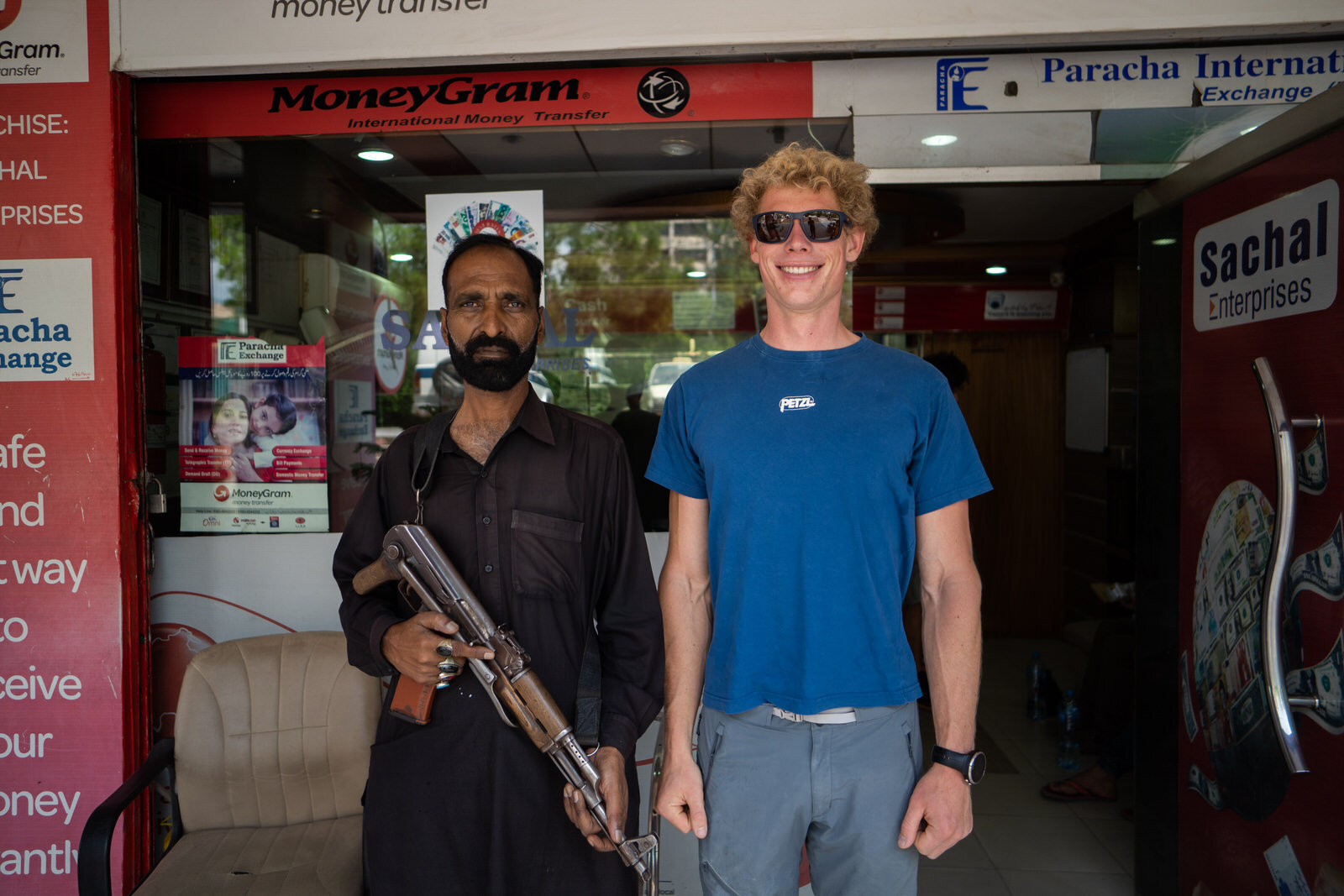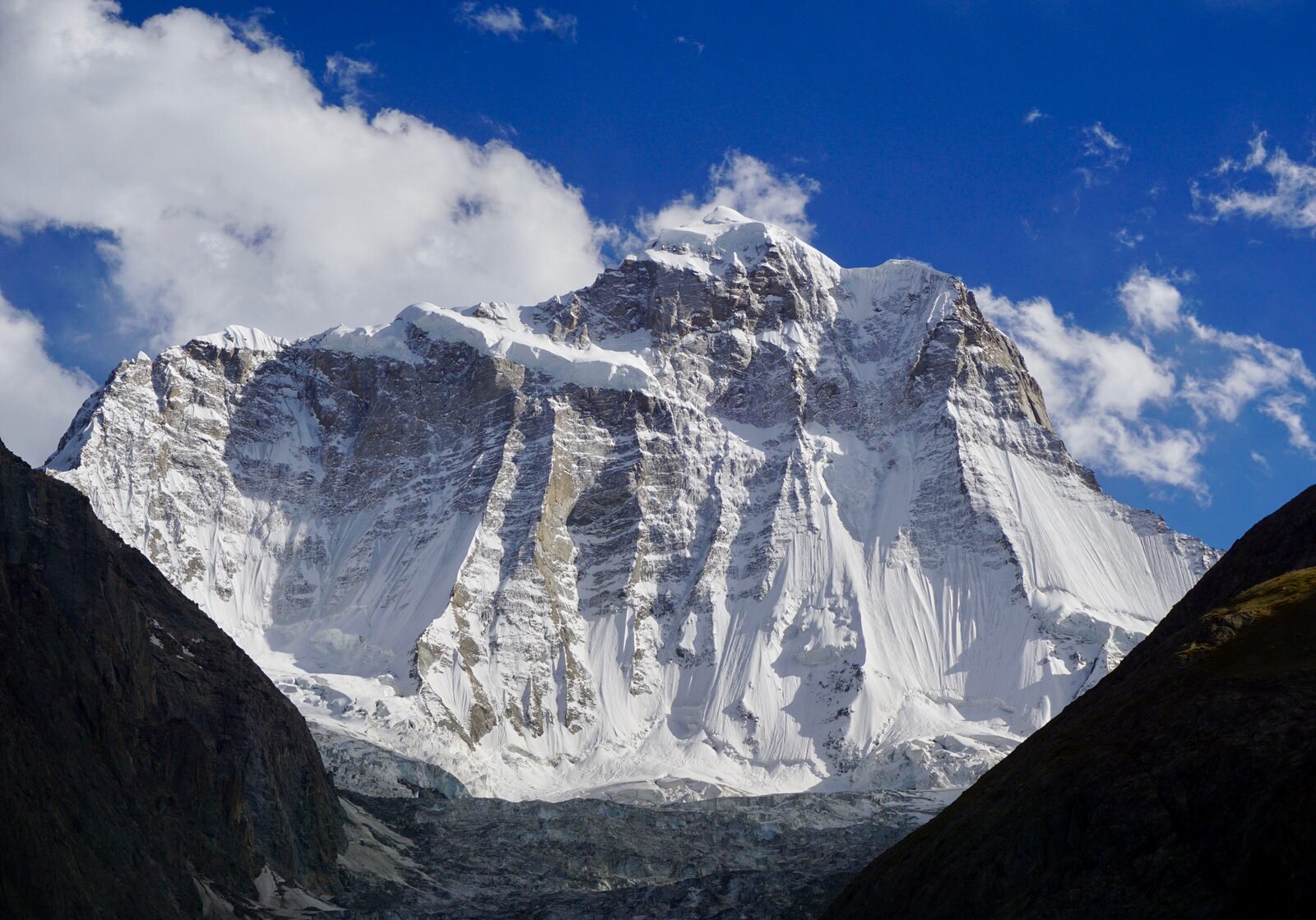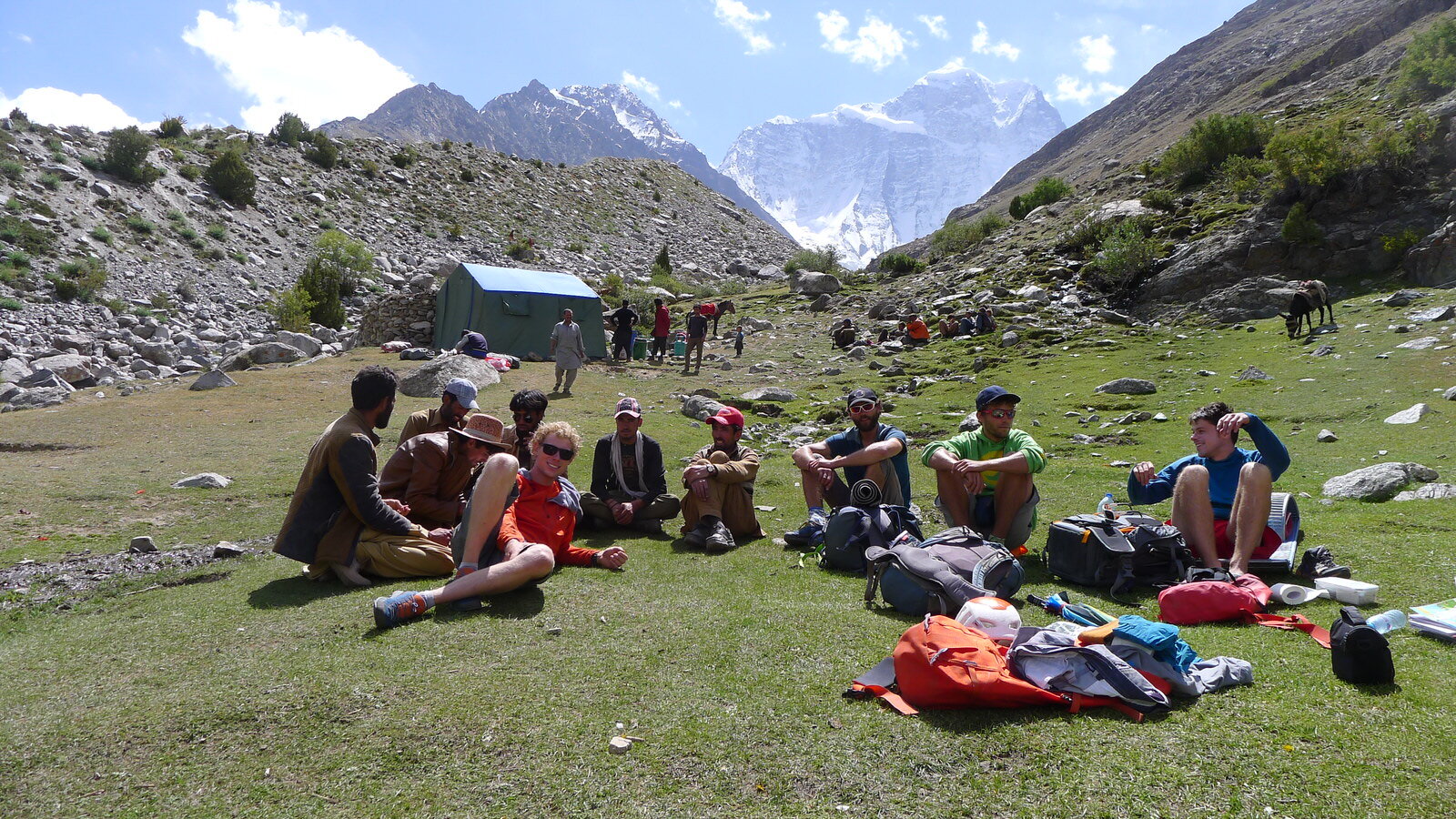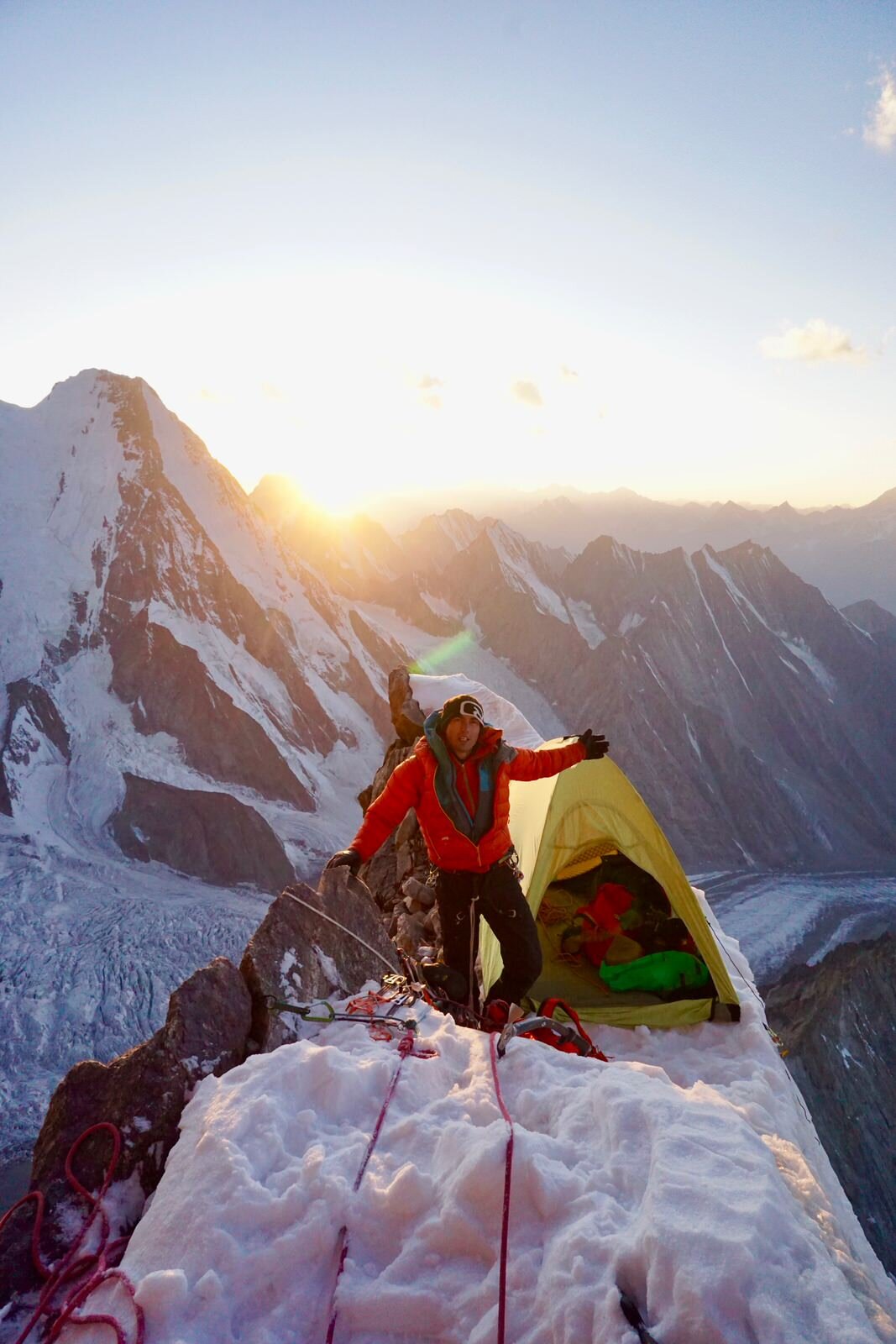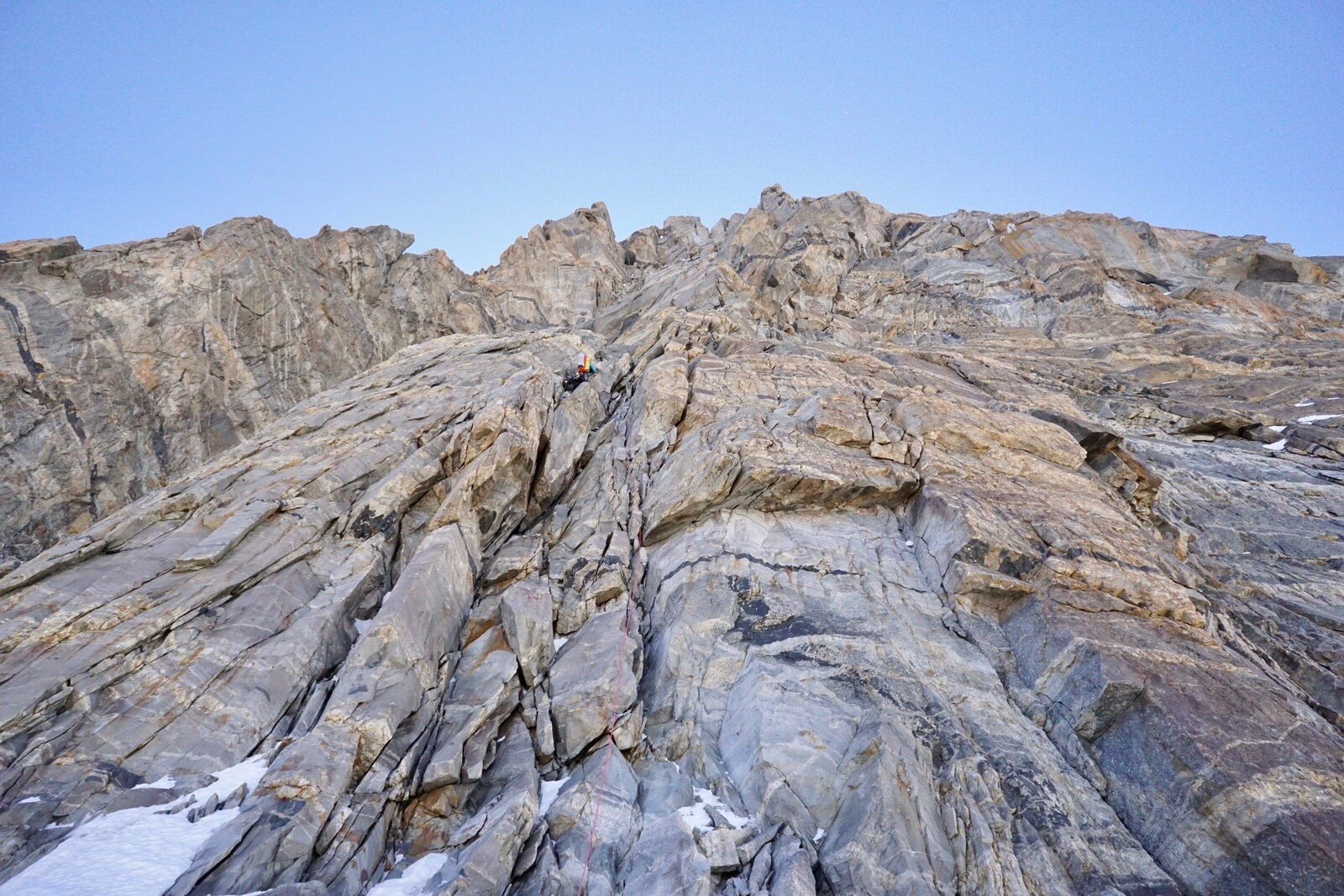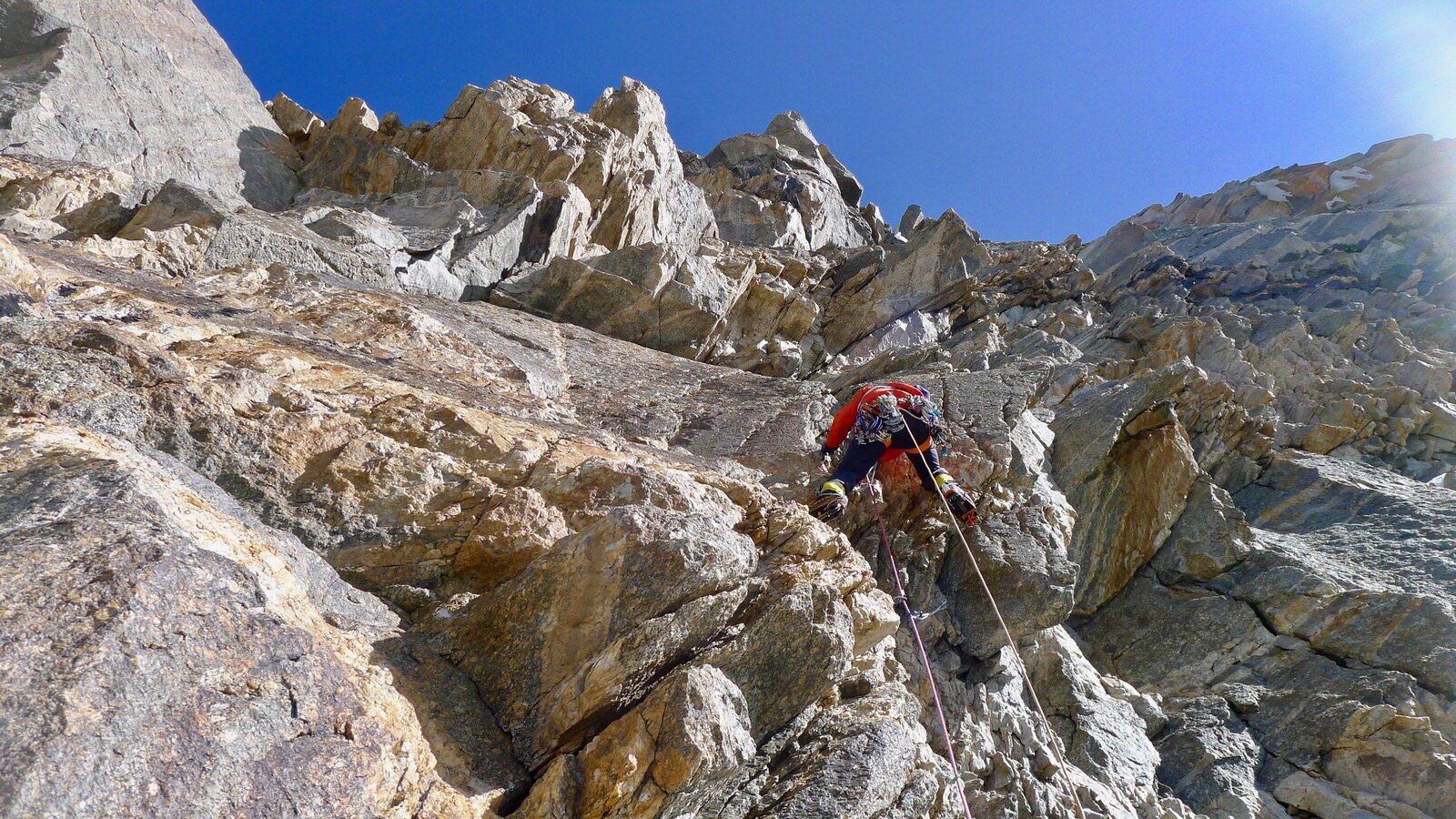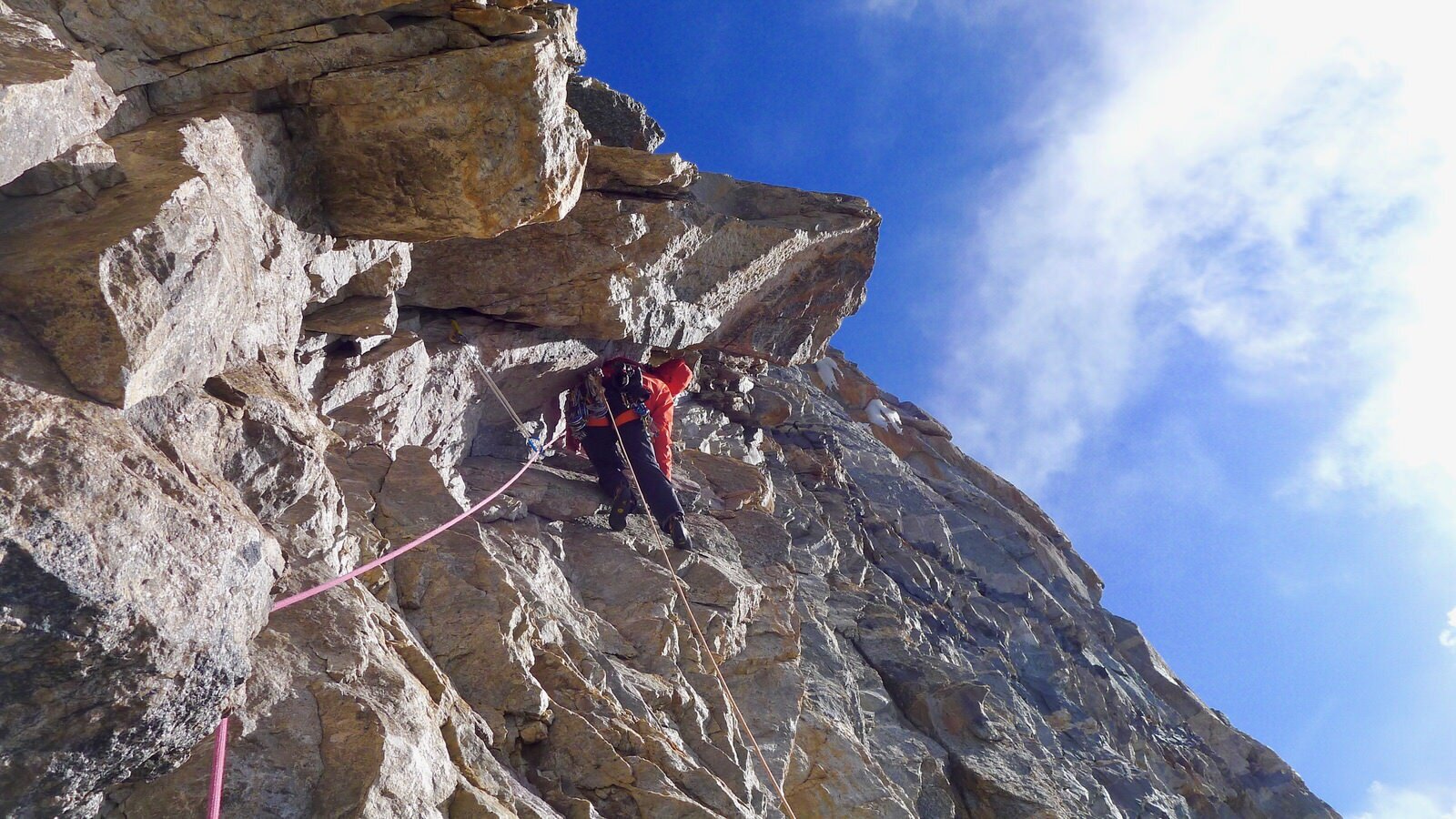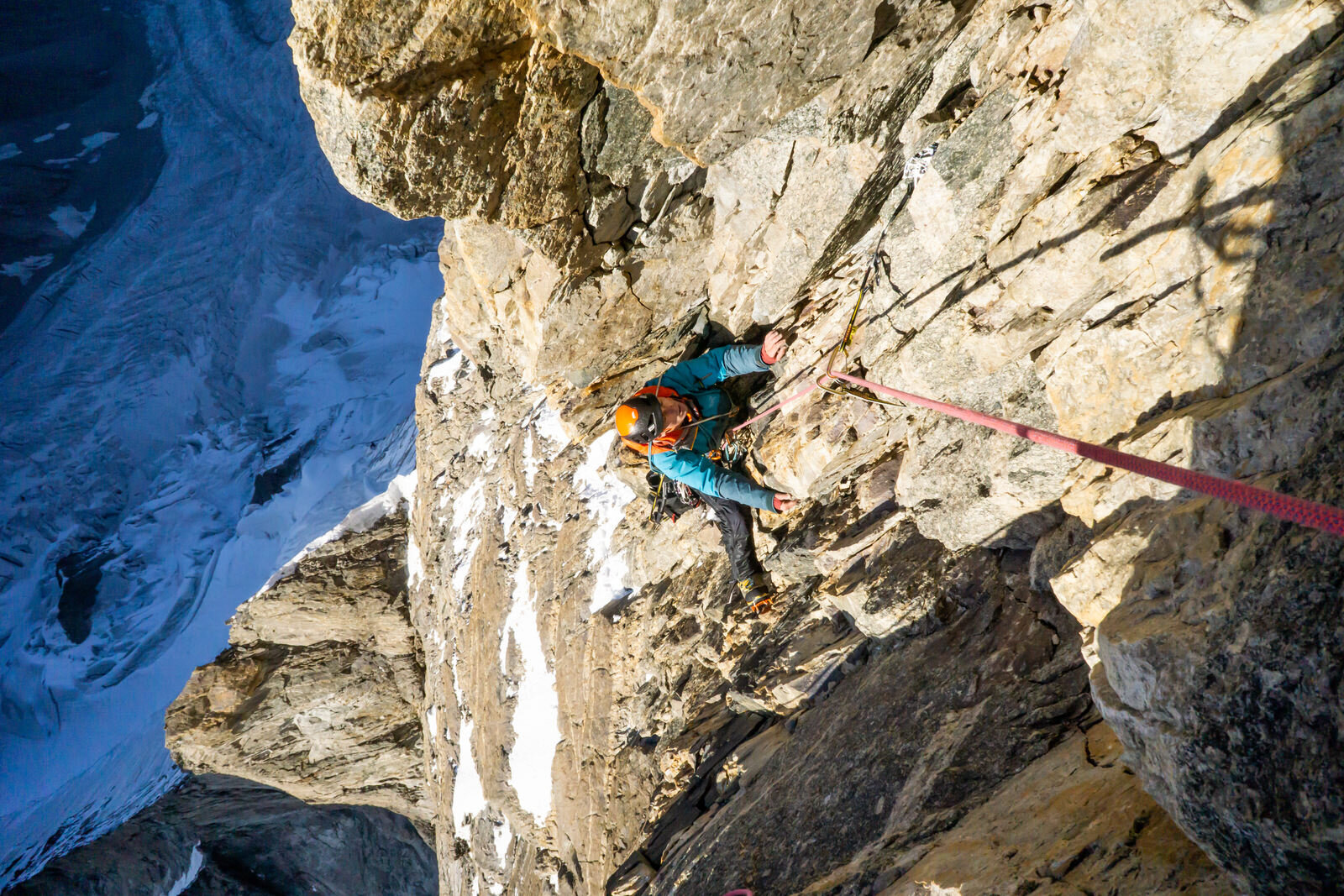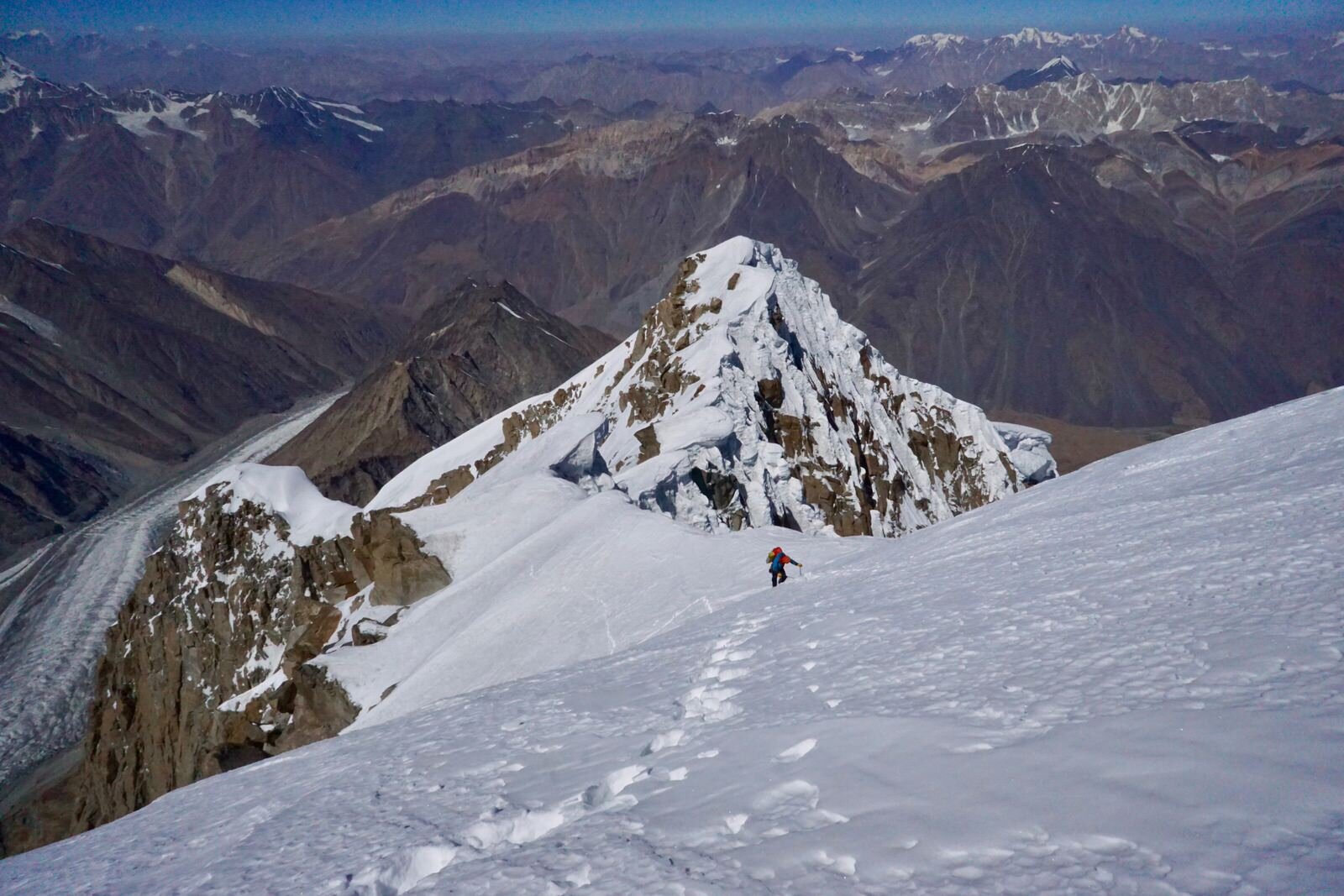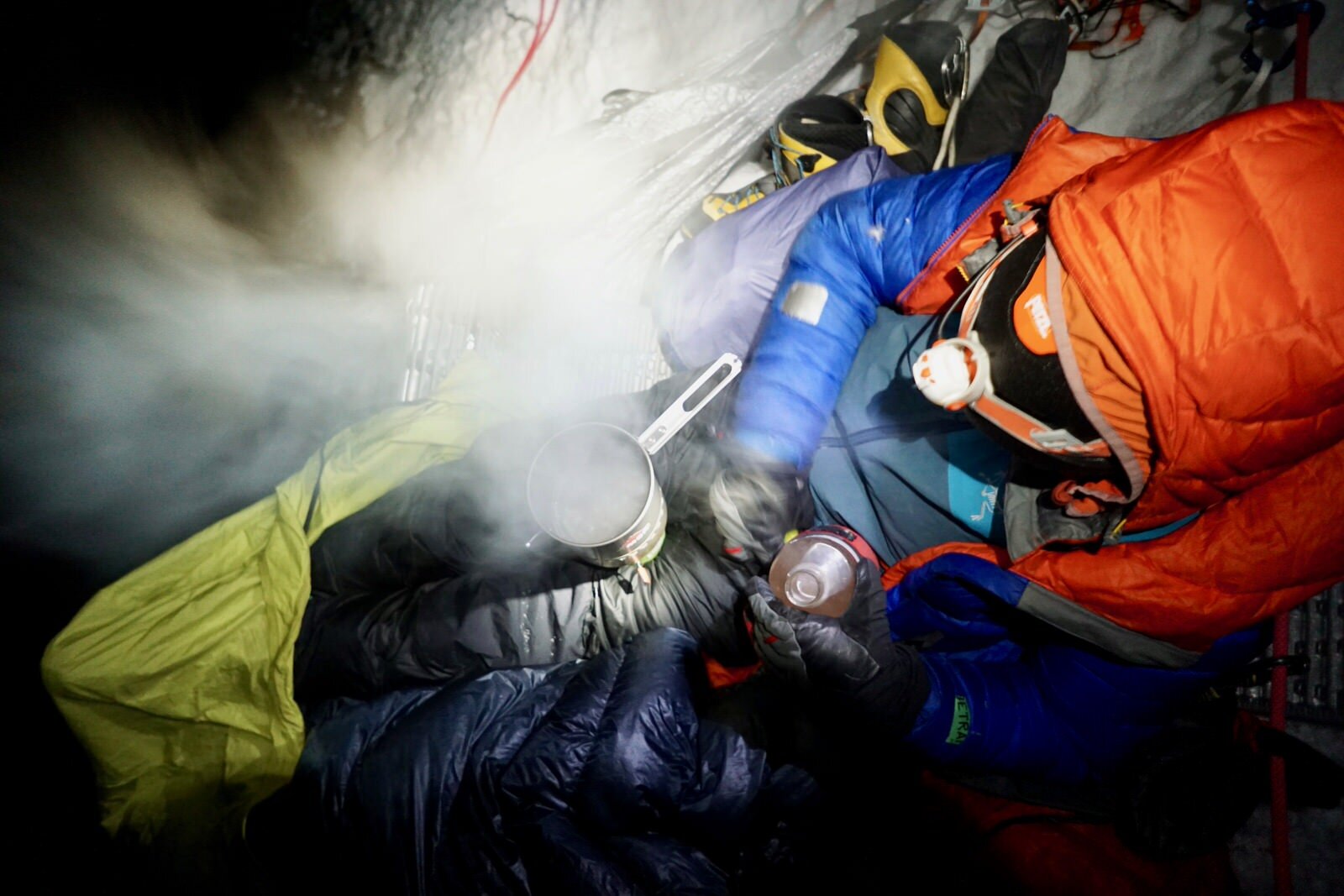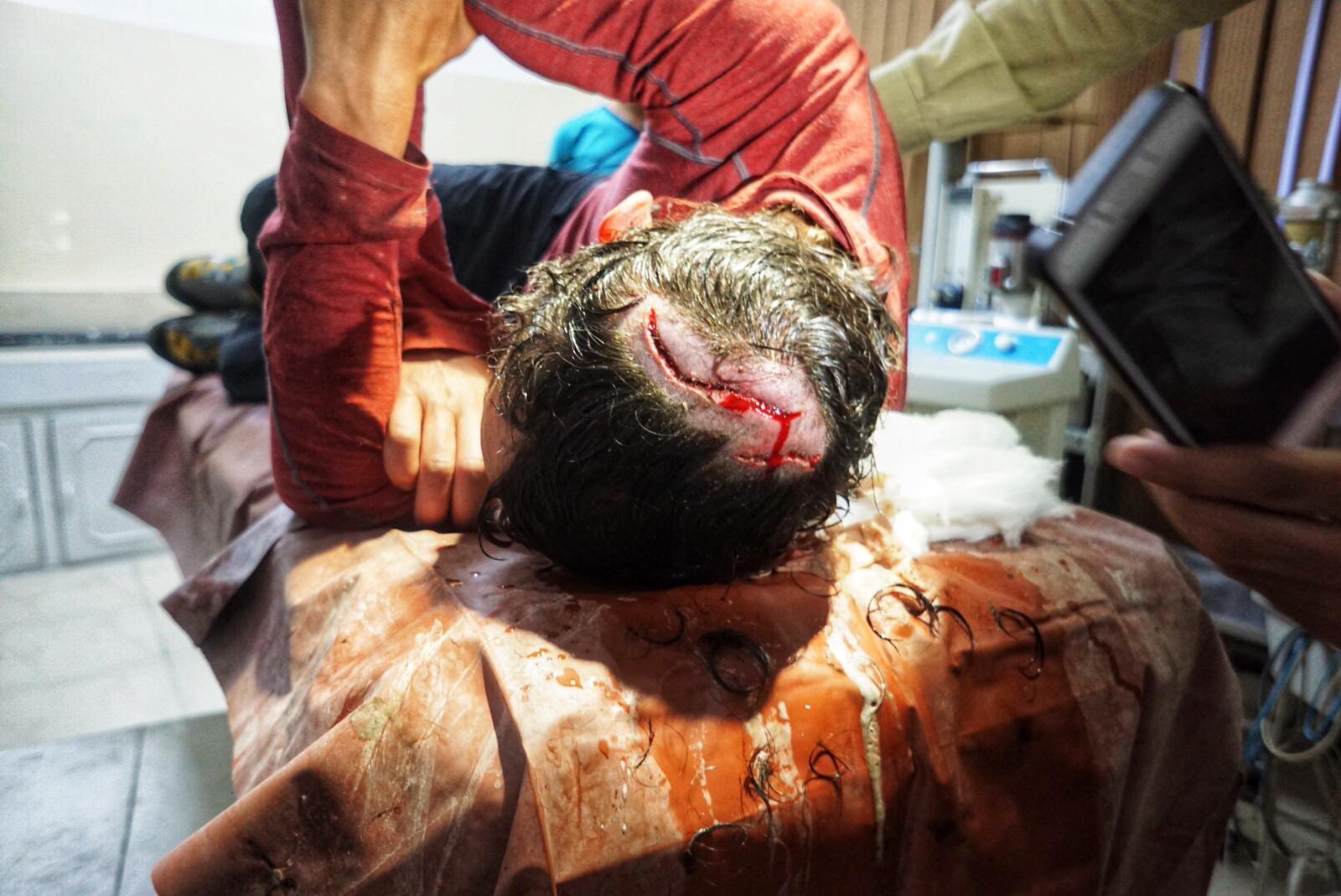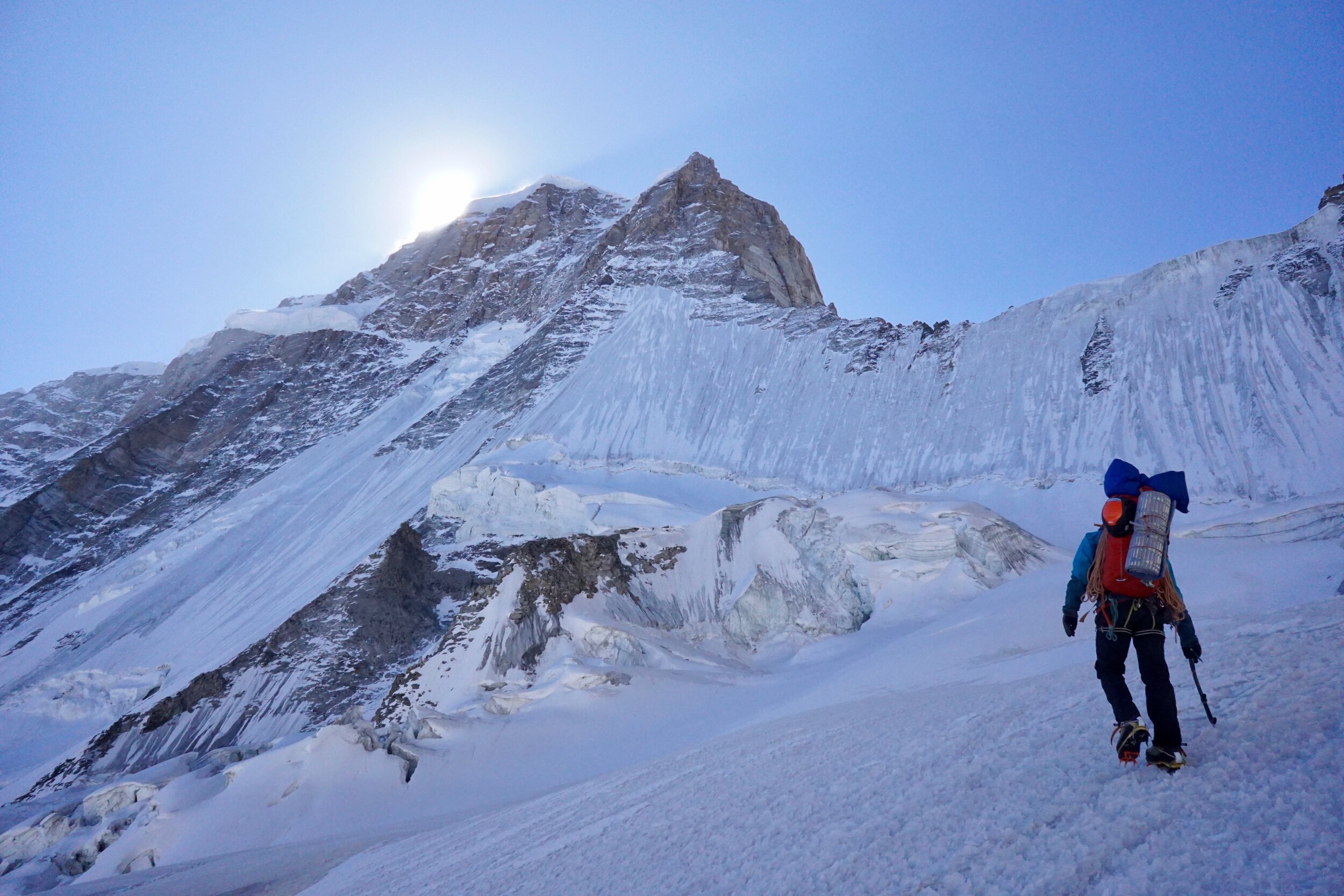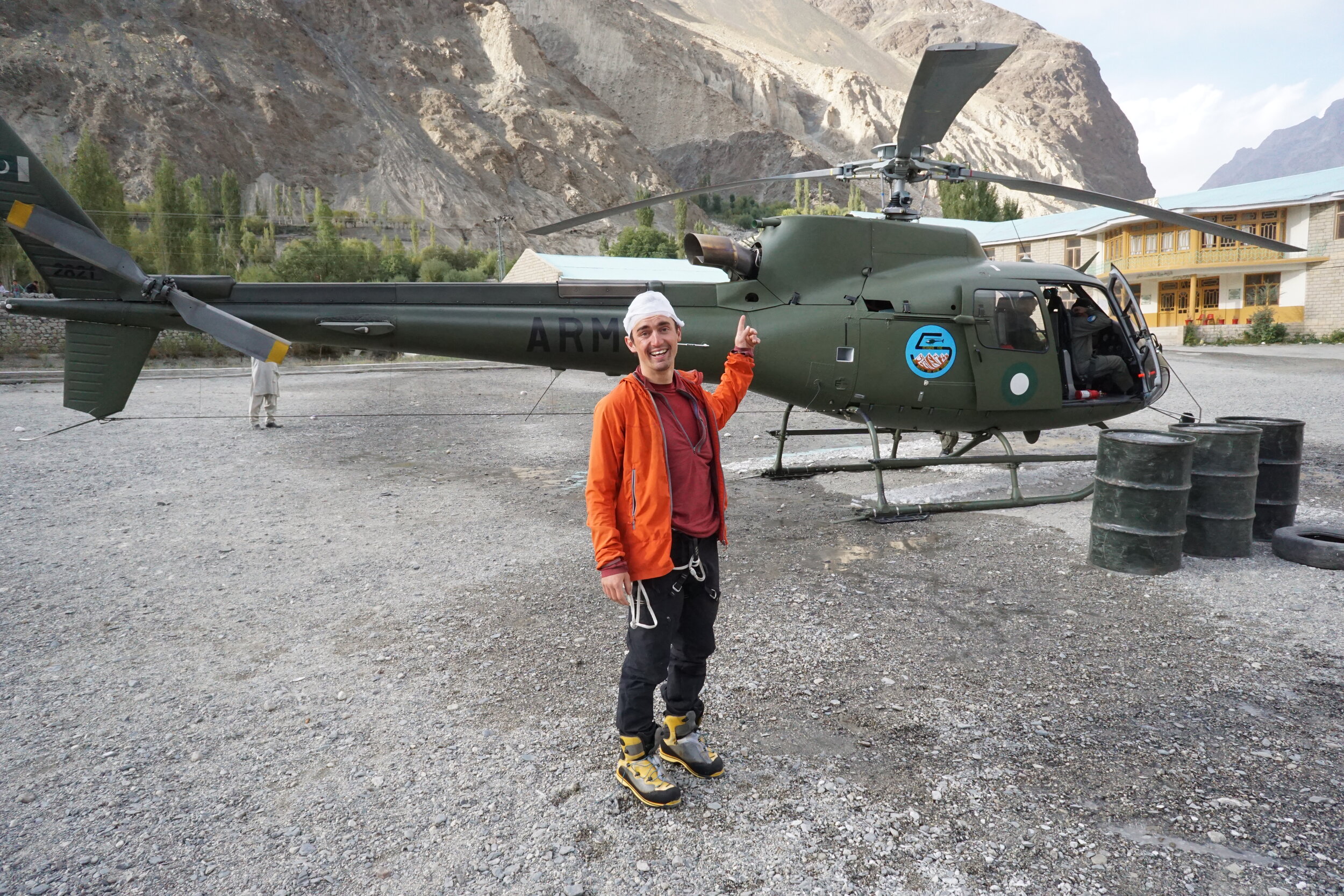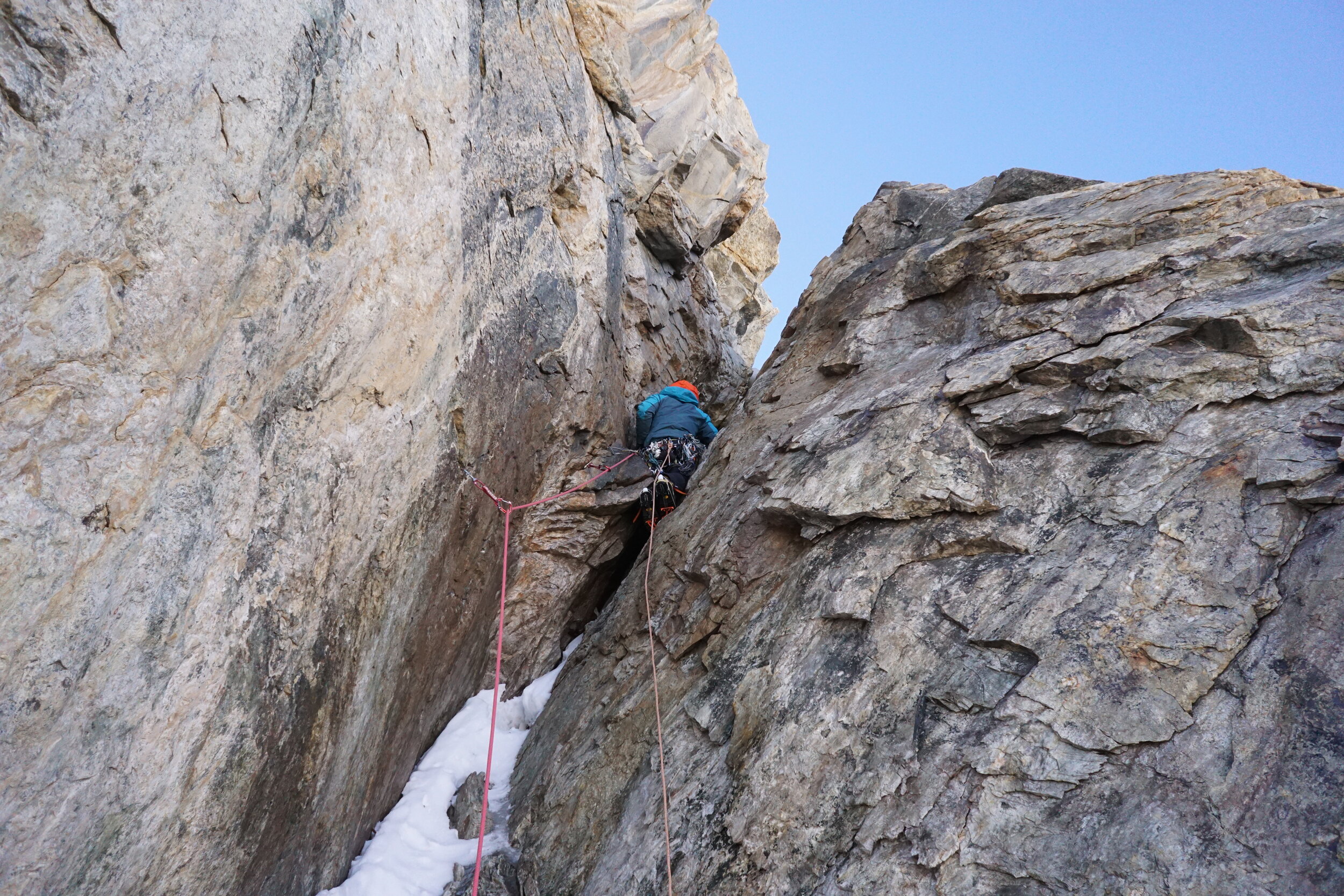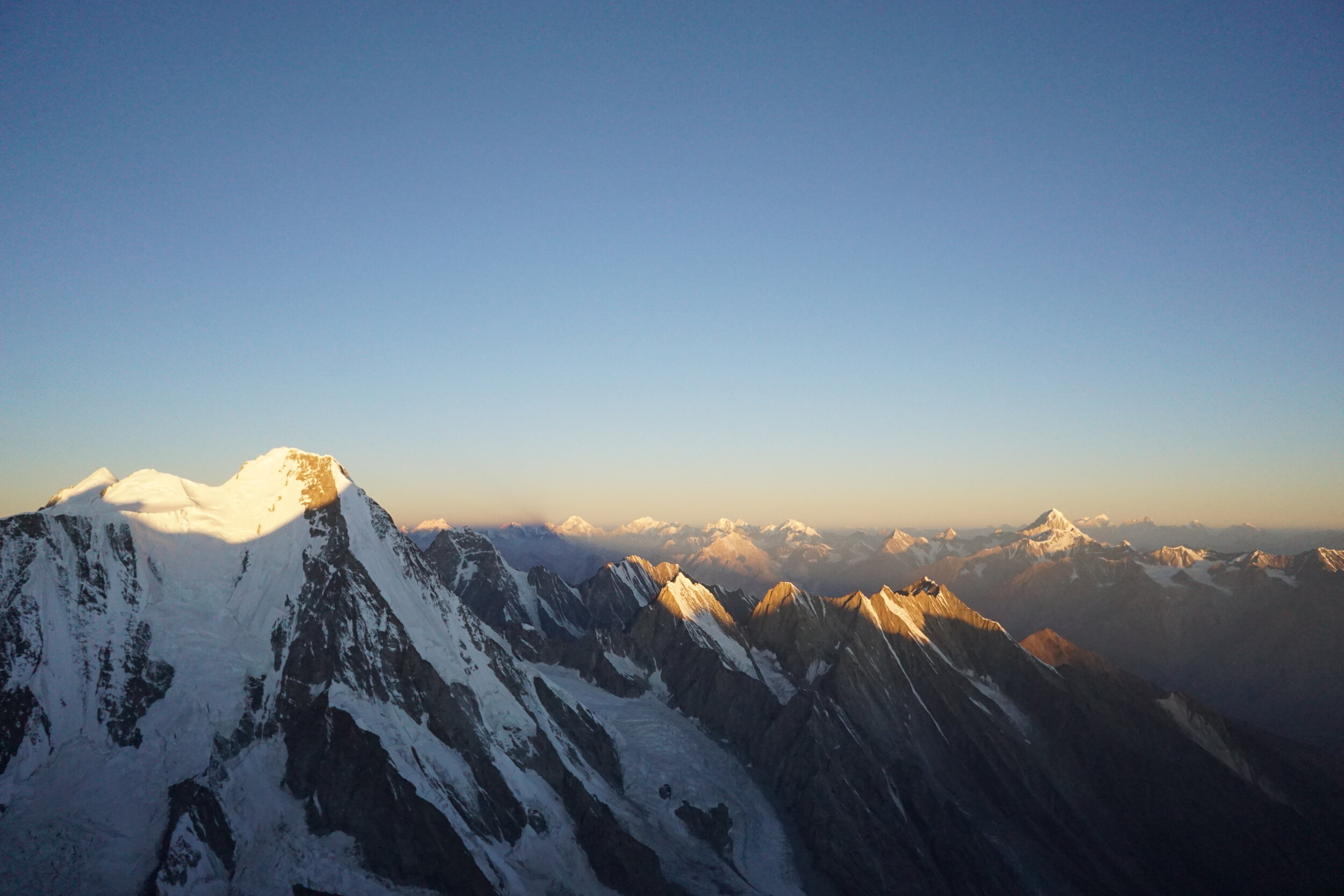The Great Game, Koyo Zom, Pakistan - 2019
This first appeared as a series of posts on Instagram, but I thought I’d republish it fully here to show to highs and lows of Ally and my new route (‘The Great Game’) in Pakistan, in the autumn of 2019.
The waiter appeared. ‘Two eggs, please’ I asked him.
‘Fry or mix?’ He asked.
‘Two eggs fry,’ I replied hungrily. He nodded and turned away. I looked back at Ally. The blood on his face had been cleaned, his head now stitched and bandaged. He logged onto the hotel WiFi and, within seconds, messages began pinging through…
***
Koyo Zom (6877m) is a beautiful mountain in the Hindu Raj range in Pakistan. Like a medieval castle in the wilds of Asia, it’s bulk looks out towards Afghanistan and Tajikistan. Will Sim had ‘re-discovered’ this forgotten, mysterious mountain and invited Ally Swinton, Uisdean Hawthorn, John Crook and myself to join. Through September and October, we’d spend six weeks travelling, acclimatising and then waiting for a weather window to try a new route in alpine style.
September arrived, and the plan unfolded. We travelled to Pakistan, acclimatised, and then, towards the end of our trip, a window of opportunity appeared - fair weather stretched into the distance. As Will, Uisdean and John were motivated to try the left hand skyline of Koyo Zom, Ally and I looked to the right hand skyline. We packed our bags for seven days on the mountain’s unclimbed west face.
Our new route on the north-west face of Koyo Zom (6877m) was an amazing, testing experience. After climbing an icefield, we bivied at its top on Day 1. We then followed mixed chimneys and corners on Day 2, breathing hard in the cold, dry air. It was like dry tooling with your hands, pulling on frozen-in spikes and flakes of rock. Our crampons bit into the weathered, textured ice.
We stopped on a narrow snow ridge in the golden glow of sunset, our entire view feeling pretty special. Whilst doing the lengthy tasks of melting water for our freeze-dried meals and keeping warm, we anxiously looked at the enormous headwall above, searching for a way through it’s steepness. Ally had dubbed it ‘the cathedral.’ I thought it looked more like Mt. Alberta, in the Canadian Rockies. I wasn’t sure what was worse! We ducked back into the tent as dusk overtook day.
I woke up several times during the night and gazed at the sky. The stars! You should see the stars! Millions of tiny glowing lights silently spun around our tent. Such sights are rare.
The waiter re-appeared. “Two more eggs fry, please.” He smiled, acknowledging my hunger and sunburnt face.
On Day 3, Ally and I quested into the headwall. Our uncertainty hung in the air as we gingerly shifted on creaking belays. The loose rock we threw over our shoulders fell for hundreds of metres, spinning and tumbling down the the glacier, and we stuffed cams into solid cracks.
Ally’s motivation and strong mentality encouraged me to continue, so I aided and French-freed higher. Weighting a hanging belay at over 6100m, with the golden afternoon sun washing over the west face, I whooped in delight. I switched to rock shoes and began tip-toeing through the 3D steepness, the climbing so reminiscent of the beloved Gogarth in North Wales. I was able to get hands-off rests when I bridged between hanging fangs of rock, revealing in the exposure. What the hell were we doing, climbing E4 6a moves at over 6000 metres?! I sat on a cam every now and again to get my breath back.
At the final belay of the headwall, my bare hands quickly stuffed into gloves, I reflected on the pure joy of this type of climbing. I hadn’t expected us to make it through the headwall, and we’d been granted a subtle weakness through to the upper part of the mountain. This is alpine climbing at its finest, and the type of adventure I enjoy most - hard and technical. We soaked in the view: peaks cut the horizon, disappearing into Pakistan and Afghanistan. We chopped a small ledge in the snow for a bivy and began to spoon.
On Day 4 we followed easier ground, worn down by the altitude. We now loathed the weight of the double set of cams, set and a half of wires and set of pegs. Scrambling over mixed ground after exiting the headwall, our view of the world expanded and we retracted into ourselves: both physically into every item of clothing, and mentally into our own heads. It wasn’t long before I checked into my ‘altitude pain cave’ as we continued upwards. We crashed in the early afternoon, willing to be near the top.
On Day 5, we embraced the bitter cold on the summit slopes and trudged upwards. Hoping to see the tracks of our friends Will, Uisdean and John, we pushed on, but then figured they must’ve turned back when Ally and I saw nothing. ‘We’ were completely alone, a pair becoming a single thing.
Sucking in all the air we could manage - and bent double hyperventilating when we couldn’t - we finally got to the 6877m summit around 1pm on Saturday 28th Sept. It had been one of the best, most enjoyable alpine routes I’ve ever climbed. Our “woohoo!” shouts were lost in the jagged mountains stretching into the distance. White-capped teeth rose from dark brown valleys in all directions: Pakistan, China, Tajikistan and Afghanistan.
We made a smooth descent down the mountain’s easier eastern side, where the Austrians in ‘68 and Brits in ‘74 had made the only previous ascents of Koyo Zom. This was significantly quicker than abseiling back the way we’d come, up the west face.
Ally and I slumped onto the Pechus glacier, pitching the tent in the evening. We could almost taste the fried pekora made by our base camp cook, Moseen. All we had to do was walk down this glacier, weaving through crevasses for about 6km and dropping 2300m in altitude. We now knew our friends Uisdean, Will and John were safely back in BC after bailing from their route.
On the sixth morning, we woke with the sun, roped up and trudged down, slush sucking at our boots.
What happened next is an unlucky mistake, but essentially Ally fell about 15 or 20 metres into a crevasse and sustained several injuries. I did what anyone would do in the ensuing 28 hours and cared for him as I’m sure he would for me. When I pulled him out, he was covered in blood from a head wound. It looked deep, but the single bandage and his hair matted together to help stop the bleeding. I sliced open his trousers to check his leg pain, hoping my fingers wouldn’t meet a sharp bone and soft, wet flesh. Thankfully the leg was only badly bruised.
I tried to think through the adrenaline. We were in a remote region of Pakistan. The only photo I’d seen of our descent made it look like a gnarly, long glacier, which would take all day to travel if we were healthy and lucky. Ally was shivering and bleeding from his head. We were out of gas and food (save for a few bars and nuts). I knew Ally needed mode medical attention than our single bandage could provide. After a few minutes of thought, I pressed the SOS button on our Garmin InReach Mini.
I was glad Ally remained conscious throughout the time waiting for a helicopter rescue, but in the first evening he seemed very faint, unresponsive and weak. I admit: for a time, I was genuinely concerned he might die in the night.
I will (unfortunately) remember waiting for the Pakistani Army helicopters to reach us. It was quite an experience to spoon Ally, covered in blood, throughout the night. I can still smell the stench. I listened to his breathing, already irregular from the altitude, and when his breath paused for seconds... and seconds... and... I’d give him a nudge, my own breath held waiting for his next inhale.
By noon the next day, Ally had improved and he even tried to hobble a few metres. As he returned to the tent, I heard the distinct “chop-chop-chop” of helicopter rotors. What a beautiful sound!
***
“Two more eggs fry, please.” The waiter’s eyes widened. “And some porridge!” We ate and ate and ate when we surreally returned to civilisation.
Ally was stitched up and checked over in a hospital in Gilgit-Baltistan. We made contact with Will, Uisdean and John, who were safely back in base camp. Somehow the press were all over the story, with totally inaccurate reports and very sensationalised stories. Now I know first-hand how false the news stories were, it makes me wonder what’s actually correctly reported in our media?
This leaves me in a dilemma. I count alpinism as one of the coolest, hardest, most unforgiving - yet rewarding - types of climbing. I hold myself to high standards and ethics. I want to climb high and free. I have echoed others’ comments in the past about these standards: ‘if you get frostbite on a route, you lose. If you get rescued on a route, you lose.’
And yet I want to remember the route Ally and I climbed, one of the best I’ve ever done, and up until the rescue, one of the highest highs. It felt so cool to be on the summit, as if we were on the Moon. But I have to hold my word and say we got rescued. We ultimately ‘lost’ by those terms. But as friends have said, winning and losing don’t really apply to alpine climbing, and I’m glad we had an incredible time on our new route; there’s just an asterisk at the end. Accidents just happen in the mountains - sometimes you’re lucky and sometimes not. The main thing is that we’re both safe and well, and we had an amazing adventure. Nothing else really matters, despite the above.
At some point in the night I asked Ally what he wanted to call the route. He suggested ‘The Great Game.’ This is the name of an amazing book about the history of Central Asia, and its power struggles for hundreds of years. It also seems a fitting name for our route. I don’t know about grades, but I’d stab at ED+ 1500m for now.
On our return to civilisation, we sit in an empty, high-ceilinged hotel restaurant. The space and quiet is comforting. The waiter returns and I lean back, empty plates stacked high after the first proper breakfast in many, many days. I can feel my body relax after so much tension. For now, I feel very content.
Thanks for an amazing trip, lads! It sure was a blast.
Thanks also to Jon Griffith, Ruth Bevan, the Pakistani Army, the Fearless Five pilots, Garmin InReach, the UK Foreign Office, the UK Rapid Response Unit, GEOS IERCC, the British embassies in both Islamabad and Karachi, Global Rescue, and our in-country agent (Jasmine Tours) and team (Imran, Mohsin, Nabeem and Eshaan).
This trip was supported by: The Alpine Club's Montane Alpine Club Climbing Fund, the Austrian Alpine Club, the BMC, Firepot Food and Trail Butter.
